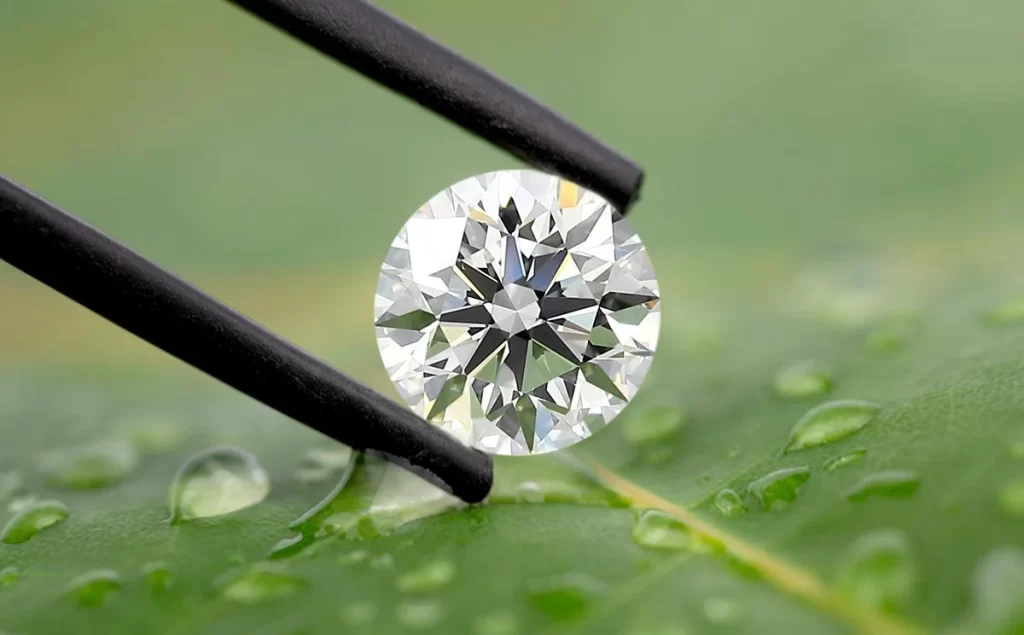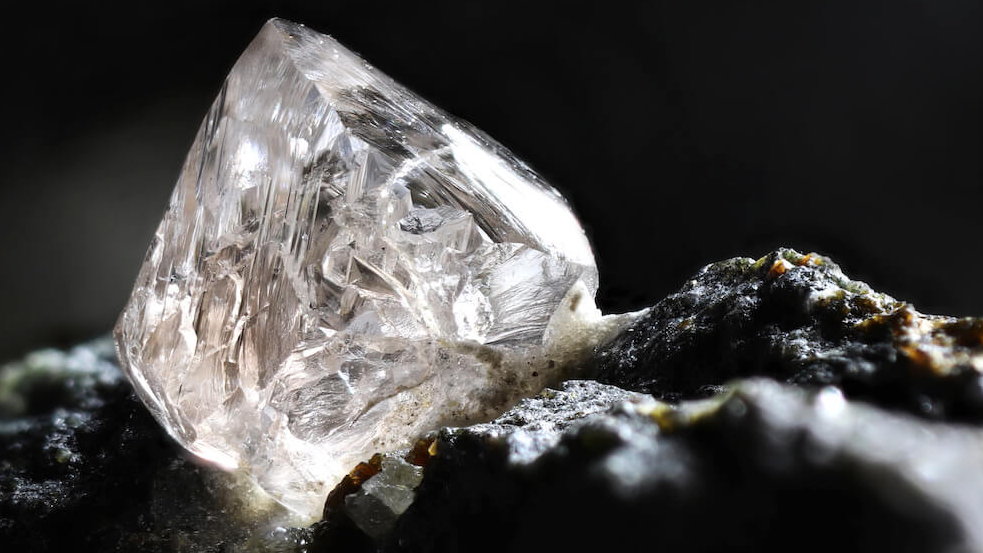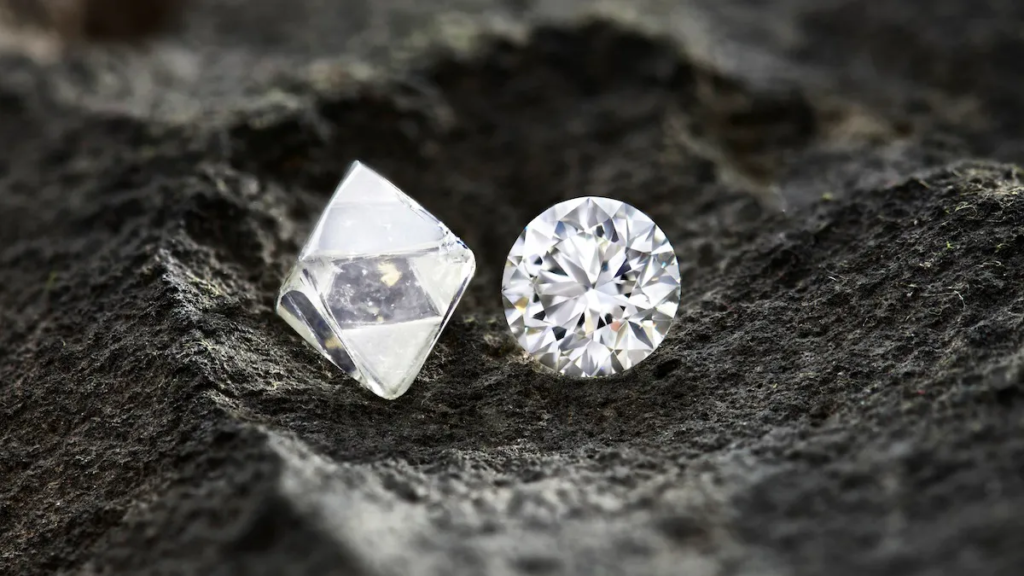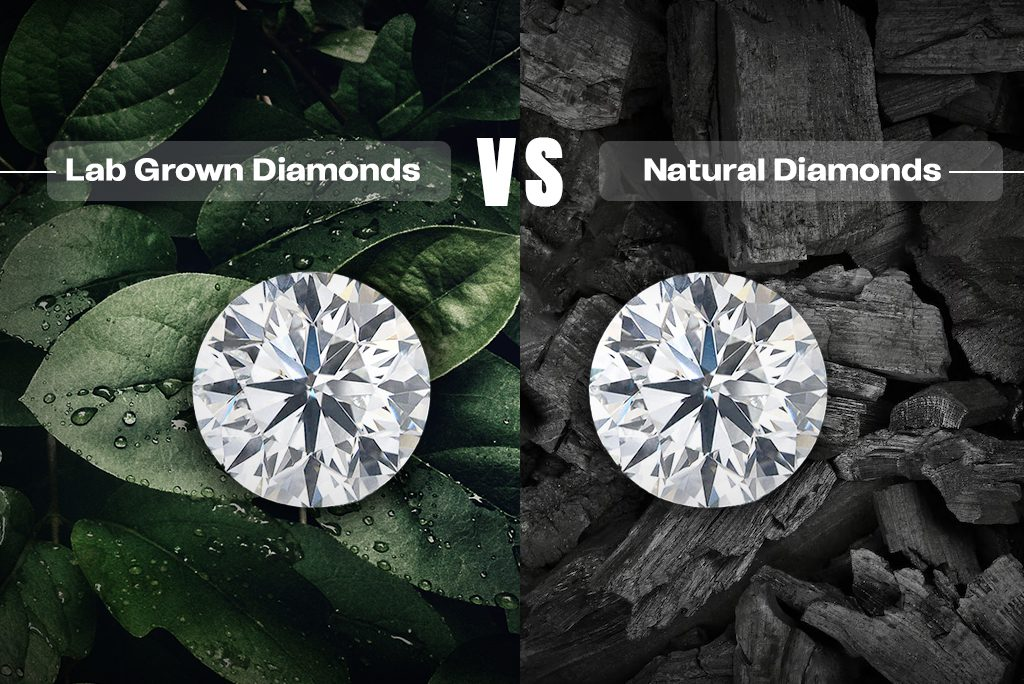When it comes to choosing the perfect diamond, the options can be dazzling—and a bit overwhelming. Lab grown diamonds and natural diamonds are two popular choices that have captured the attention of jewelry lovers everywhere. But what sets them apart? Are lab grown diamonds truly comparable to their natural counterparts, or do they lack something essential?

In this post, we’ll dive into the fascinating world of these sparkling gems. We’ll explore their unique qualities, production processes, and ethical implications. Whether you’re looking for an engagement ring or simply curious about diamond types, understanding the pros and cons of each will help you make an informed decision in your jewelry choices. Let’s embark on this gem-filled journey together!
What are Lab Grown Diamonds?
Lab grown diamonds, often referred to as synthetic or cultivated diamonds, are created in controlled environments using advanced technology. Unlike natural diamonds that form over millions of years deep within the Earth’s crust, these gems can be produced in a matter of weeks.
These man-made jewels possess the same physical and chemical properties as their mined counterparts. Both types consist of carbon atoms arranged in a crystal structure, giving them remarkable durability and brilliance.
Lab grown diamonds come with an added benefit: they can be made to specific specifications. This means you can choose your ideal carat size, color, and clarity without worrying about the geological limitations found with natural stones.
Beyond their stunning appearance, lab grown options appeal to eco-conscious consumers seeking ethical alternatives in their jewelry choices. They offer a modern twist on tradition while maintaining gemstone quality that rivals any diamond sourced from the earth.
The Process of Creating Lab Grown Diamonds
Creating lab grown diamonds involves advanced technology that mimics the natural processes occurring deep within the Earth. There are two primary methods: High Pressure High Temperature (HPHT) and Chemical Vapor Deposition (CVD).
HPHT simulates extreme pressure and temperature, replicating conditions found in nature. A small diamond seed is placed into a chamber with carbon materials. Under intense heat and pressure, it crystallizes slowly over time.
On the other hand, CVD uses gases to create a plasma environment where hydrogen and methane break down, depositing carbon atoms onto a diamond seed. This method allows for precise control over growth conditions.
Both approaches result in stunning gems that share physical properties with natural diamonds but come without mining’s environmental impact. As technology improves, lab grown diamonds continue to gain popularity as an ethical choice in the jewelry market.

Advantages of Lab Grown Diamonds
Lab grown diamonds offer several appealing advantages that make them a popular choice among consumers.
First and foremost, they are often more affordable than their natural counterparts. This price advantage allows buyers to invest in larger stones or higher quality gems within the same budget.
Another significant benefit is the ethical aspect. Lab grown diamonds are conflict-free, meaning they come without the concerns associated with mined diamonds, such as environmental damage and human rights violations.
In addition, these diamonds exhibit exceptional clarity and brilliance. Because they are created in controlled environments, manufacturers can ensure high standards of quality.
Moreover, lab grown options provide a wide range of customization possibilities. From color to cut, buyers have greater flexibility when designing their perfect piece.
Lab grown diamonds contribute to sustainability efforts by reducing mining impacts on ecosystems while still delivering gorgeous gemstone quality.
Disadvantages of Lab Grown Diamonds
While lab grown diamonds offer many benefits, they also come with certain drawbacks. One major concern is their resale value. Unlike natural diamonds, which have a long-established market, lab grown diamonds can depreciate significantly after purchase.
Additionally, some purists argue that these stones lack the unique history and character of natural gems. A lab-grown diamond may be visually identical but doesn’t carry the same romantic allure tied to its geological journey.
There’s also an ongoing debate about consumer perception. Many still view natural diamonds as more prestigious due to their rarity and traditional significance in jewelry choices.
Not all consumers are aware of the differences between these two types of diamonds. This knowledge gap can lead to confusion or skepticism regarding authenticity and quality when making a purchase decision in the gemstone market.

What are Natural Diamonds?
Natural diamonds are precious gemstones formed deep within the Earth’s mantle, under extreme heat and pressure. These captivating stones take millions of years to develop, making them a symbol of timeless beauty.
Composed mainly of carbon atoms arranged in a crystal structure, natural diamonds come in various colors and qualities. Their rarity adds to their allure and value, attracting gem enthusiasts worldwide.
Each diamond tells a unique story rooted in geological processes that date back eons. As they journey from underground formations to polished gems, they acquire character that lab grown alternatives simply can’t replicate.
The fascination with natural diamonds is not just about their physical properties but also the emotions they evoke. They represent love, commitment, and enduring relationships—making them popular choices for engagement rings and other significant jewelry pieces.
How Natural Diamonds are Formed
Natural diamonds form deep within the Earth’s mantle, approximately 90 to 120 miles beneath the surface. High-pressure conditions and extreme temperatures of around 1,300 to 2,200 degrees Fahrenheit are essential for their creation.
Carbon atoms bond in a crystal structure over millions of years. This process transforms ordinary carbon into one of nature’s most precious gems.
Volcanic activity plays a crucial role in bringing diamonds closer to the Earth’s surface. As magma erupts, it carries these stunning stones along with it in what are known as kimberlite pipes.
Once exposed, natural diamonds can be discovered through mining processes or found on riverbeds where they have eroded from their original formations. Each diamond tells its own story through unique characteristics and inclusions formed during its long journey underground.

Pros and Cons of Natural Diamonds
Natural diamonds have an allure that many find irresistible. Their unique formation process, shaped by time and nature, imbues them with a distinct character and history.
One of the most significant benefits is their rarity. Each natural diamond has its own journey deep within the Earth’s mantle, making it truly one-of-a-kind. This uniqueness often translates to emotional value for owners.
However, acquiring natural diamonds can come with ethical concerns. The mining processes may contribute to environmental degradation and social issues in certain regions.
On the other hand, natural diamonds tend to hold their value over time better than lab-grown counterparts. They are seen as status symbols and investment pieces.
Yet, price fluctuations can be unpredictable due to market demand and supply dynamics associated with mining practices. Balancing beauty, ethics, and cost remains essential when considering your jewelry choices.
Cost Comparison between Lab Grown and Natural Diamonds
When it comes to cost, lab grown diamonds typically offer a significant advantage. These stones can be 20% to 40% less expensive than their natural counterparts. This price difference stems from the controlled environment in which they’re produced and the absence of extensive mining costs.
Natural diamonds involve complex extraction processes that require heavy machinery and labor. The rarity also plays a role; as demand increases, prices tend to rise steeply due to limited supply.
Lab grown options allow for larger or higher-quality stones within the same budget. Many buyers find this appealing—especially when looking for exquisite engagement rings or other jewelry pieces.
For those considering diamond alternatives, this affordability means more choices without sacrificing quality. As consumers become savvier about gemstone quality, understanding these pricing structures has never been more important in making informed jewelry choices.
Ethical Considerations: Conflict-Free vs Sustainable Mining
The debate surrounding ethical diamonds often focuses on two main concepts: conflict-free sourcing and sustainable mining. Conflict-free diamonds are sourced from regions where there is no involvement in armed conflict or human rights abuses. This ensures that your beautiful gem doesn’t contribute to violence or suffering.
On the other hand, sustainable mining takes a broader approach. It emphasizes not just the absence of conflict but also environmental stewardship and fair labor practices. Sustainable mines aim to minimize ecological damage while ensuring workers receive fair wages and safe working conditions.
Consumers increasingly seek transparency about their jewelry choices. Understanding these distinctions can guide buyers toward gems that align with their values, making informed decisions about what adorns their fingers or necklines. The growing popularity of ethical options reflects a shift toward responsible luxury in today’s market.

Conclusion
When it comes to choosing between lab grown diamonds and natural diamonds, the decision often boils down to personal values and preferences. Lab grown diamonds offer clarity in origin, ethical assurance, and typically lower prices. They appeal to those leaning towards sustainability without sacrificing beauty or quality.
On the other hand, natural diamonds carry a sense of tradition and rarity that many find appealing. Their formation over millions of years adds a unique story to each stone, which can be an important aspect for buyers seeking authenticity in their jewelry choices.
Understanding the pros and cons of both diamond types is crucial when making this significant purchase. Whether you prioritize cost-efficiency, ethical considerations, or gemstone quality will influence your choice significantly.
Choosing between lab grown diamonds and natural diamonds is more than just about sparkle; it’s also about aligning with your values and lifestyle as you explore different diamond alternatives available in today’s market.
Learn more about Lab Grown Diamonds vs. Natural Diamonds here!
For more such content, keep visiting QAWire
